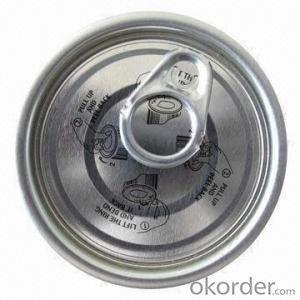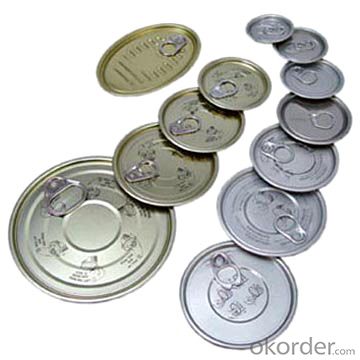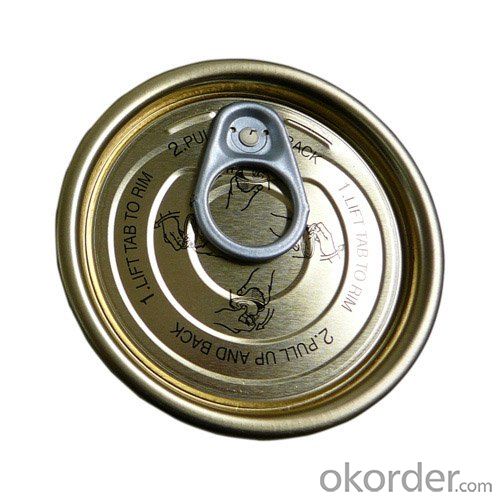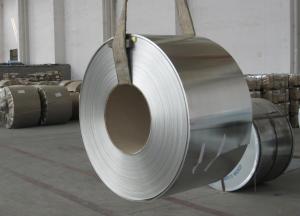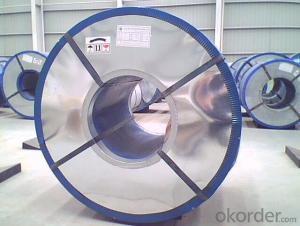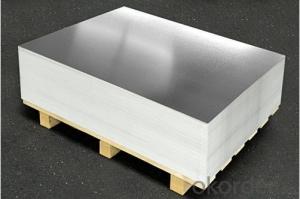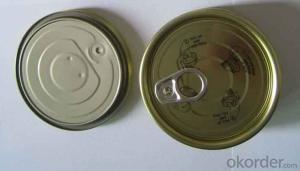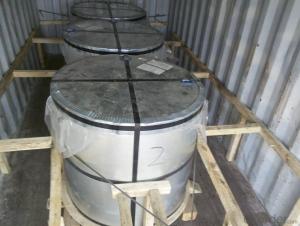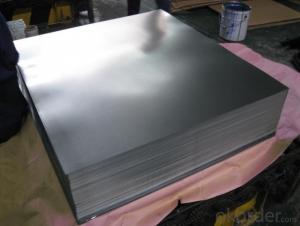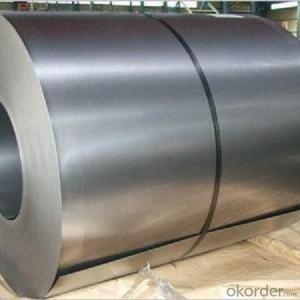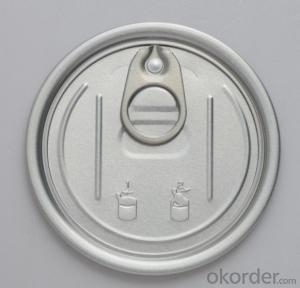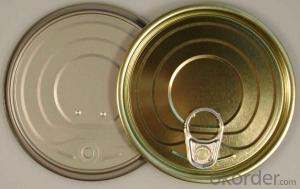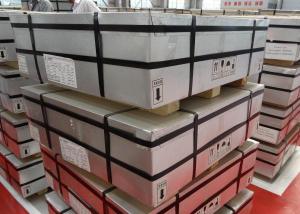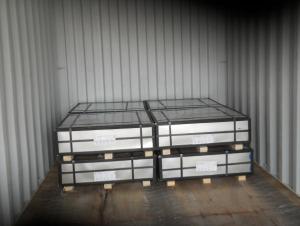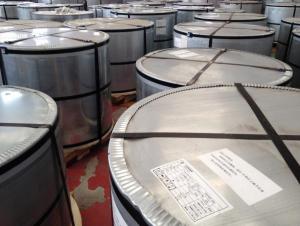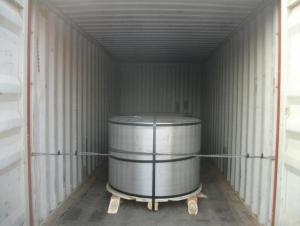Tinplate Can Lid 401#, Sardine Tuna Fish Use,Top Quality
- Loading Port:
- China main port
- Payment Terms:
- TT OR LC
- Min Order Qty:
- 500000 pc
- Supply Capability:
- 10000000 pc/month
OKorder Service Pledge
OKorder Financial Service
You Might Also Like
Brief Details
Material:Tinplate
Type: Easy Open End, full open
Usage: Cans
Feature: Canned food
Custom Order: Accept
Model Number: 401# (98.9mm), 401#
Metal Type: Tinplate
Dia: 98.9mm
Packing: paper tube
Specifications
tuna fish can
1.Tinplate 401#
2.Dia:98.9mm
3.Full open
Name | tuna fish can |
Item No. | 401# |
Shape/type | Round |
Size(mm) | Dia 98.9 |
Coating | White porcelain |
Material | Tinplate |
Pcs/20 GP’ | 950,000 Customize packing: as clients’ requests. |
Features | 1.Used for packaging of tomato paste,jam,salad…etc. 2.Have illustration printing on the lid. 3.Coating can be according to the customer required. |
Our packing
We could offer package as customers require, by carton or by wooden pallet.
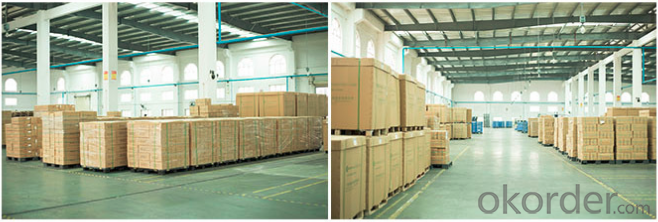
FAQ
1.Q: What is the material of EOE?
We can offer both tinplate and aluminum material made EOE;
2.Q:Could you offer samples for our testing?
YES, we could offer sampler for free if needed;
3. Q:Can you make new mold with customized size I need?
YES, We can make mold for you if reach some qty.
4. Q: Which country your EOE has been exported to?
We have exported to more than 30 countries, such as UAE, Oman, Kuwait, Pakistan etc.
- Q: Is tinplate recyclable?
- Yes, tinplate is recyclable.
- Q: How is tinplate stored and handled?
- Tinplate is typically stored in a dry and well-ventilated area to prevent rusting. It should be kept away from moisture, chemicals, and direct sunlight. When handling tinplate, it is important to use proper lifting equipment to prevent damage and injuries. It should be stored in a way that avoids excessive stacking and ensures easy access for inspection and use. Proper labeling and documentation of storage is also recommended to ensure efficient handling and inventory management.
- Q: Can tinplate be used for toys and games?
- Yes, tinplate can definitely be used for toys and games. Tinplate is a durable and versatile material that can be easily molded into various shapes and sizes, making it suitable for manufacturing different types of toys and games. Its corrosion-resistant properties also ensure the longevity of the toys, making it a popular choice in the industry.
- Q: Can tinplate be used for packaging of frozen foods?
- Yes, tinplate can be used for the packaging of frozen foods. Tinplate is a type of steel coated with a thin layer of tin, which provides excellent resistance to corrosion. This makes it suitable for packaging applications that require protection against moisture and oxygen, such as frozen food packaging. Tinplate containers can effectively keep frozen foods fresh and maintain their quality during storage and transportation. Additionally, tinplate is also known for its durability, recyclability, and ability to withstand extreme temperatures, further making it a suitable choice for frozen food packaging.
- Q: What are the main challenges in recycling tinplate?
- The main challenges in recycling tinplate include separating tinplate from other materials, such as paper or plastic coatings, as well as removing any remaining food or product residues. Additionally, the tin coating on tinplate can pose challenges during the recycling process, as it needs to be separated and recovered for reuse. Finally, ensuring a consistent supply of tinplate for recycling can be a challenge due to fluctuations in consumer demand and collection efforts.
- Q: What are the common forms of corrosion that affect tinplate?
- The common forms of corrosion that affect tinplate include tin oxide corrosion, tin pest, and electrochemical corrosion.
- Q: Can tinplate packaging be used for microwaveable products?
- No, tinplate packaging cannot be used for microwaveable products as it is a metal material and can cause sparks or fires in the microwave.
- Q: How does tinplate compare to plastic in terms of sustainability?
- Tinplate generally has a better sustainability profile compared to plastic. Tinplate is made from steel, which is a widely recycled material, and it has a high recycling rate. Plastic, on the other hand, is derived from fossil fuels and has a lower recycling rate. Tinplate is also more durable and can be reused multiple times, whereas plastic is often single-use and ends up in landfills or as litter. Additionally, tinplate has a lower carbon footprint and contributes less to environmental pollution compared to plastic. Overall, tinplate is considered a more sustainable packaging option.
- Q: How does tinplate contribute to the reliability of telecommunications devices?
- Tinplate contributes to the reliability of telecommunications devices by providing a durable and corrosion-resistant coating that protects the underlying components from external factors such as moisture, humidity, and oxidation. This helps to prevent the degradation of electrical connections and ensures uninterrupted communication, ultimately enhancing the overall reliability of the devices.
- Q: Can tinplate be used for coffee or tea packaging?
- Yes, tinplate can be used for coffee or tea packaging. Tinplate is a durable and food-safe material that provides excellent protection against moisture, light, and oxygen, making it an ideal choice for preserving the quality and freshness of coffee or tea. Additionally, tinplate can be easily shaped and printed on, allowing for attractive and customized packaging designs.
Send your message to us
Tinplate Can Lid 401#, Sardine Tuna Fish Use,Top Quality
- Loading Port:
- China main port
- Payment Terms:
- TT OR LC
- Min Order Qty:
- 500000 pc
- Supply Capability:
- 10000000 pc/month
OKorder Service Pledge
OKorder Financial Service
Similar products
Hot products
Hot Searches
Related keywords
